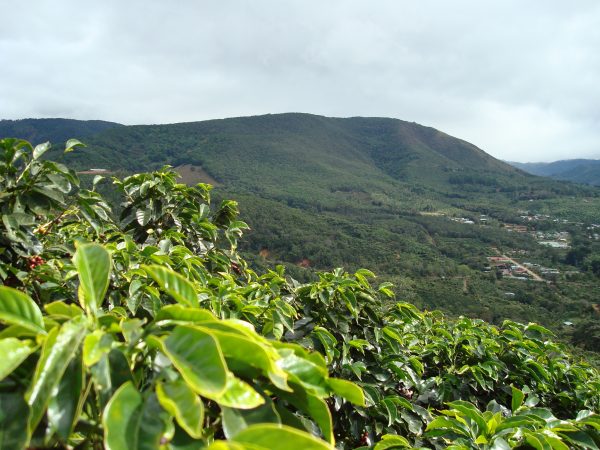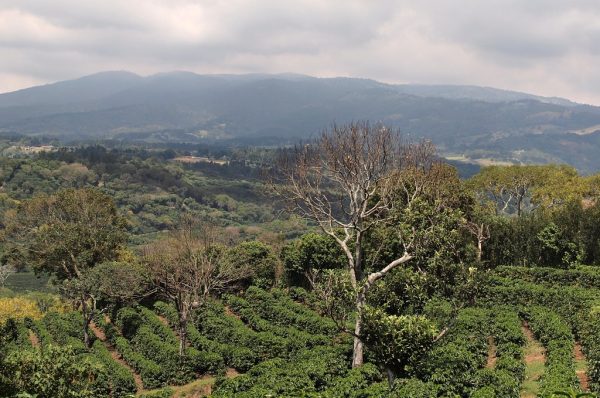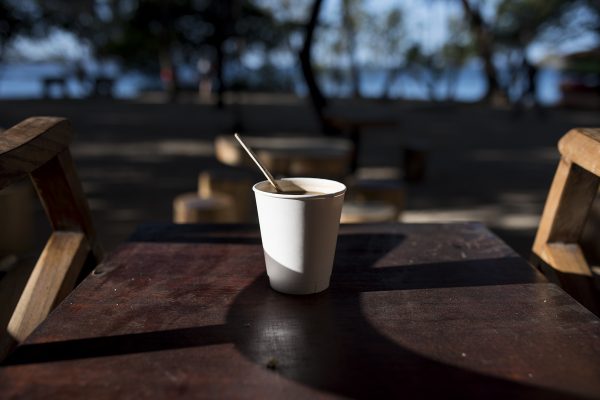Wednesday, September 18th, 2019.
In this Daily: The Conditions for Coffee in Costa Rica, and Some Spots to Enjoy a Cup in Town
Costa Rica is known around the world for its premium quality coffee. Part of this is by design, as there are strict rules and regulations regarding quality of the country’s coffee production. However, the main factor in Costa Rica’s world-renowned coffee are the specific topography and climate in the country.
Today, we take a deeper look at the conditions that lead to this high quality of Costa Rica coffee. We’ll also take a look at a few spots to enjoy a cup of coffee in town.
 A Tarrazu Coffee Plantation | PC: Commons
A Tarrazu Coffee Plantation | PC: Commons
To Start, Understanding Arabica vs Robusta Coffee
Coffee beans come in two primary varietals: robusta and arabica. Robusta is coffee made from beans of the coffea canephora plant, which has low acidity, high bitterness, and high caffeine content. Arabica is coffee made from beans of the coffea arabica plant, which is known for its more acidic, less bitter, and a slightly lower caffeine content.
Arabica is universally more highly prized due to its richer, more delicate flavors. As a result, it forms the basis for almost all artisan coffees. Meanwhile Robusta is valued for its sturdiness, adaptable growth conditions, and higher caffeine content. This makes it a useful ingredient in some espressos, and instant coffee.
 Roasted Arabica Coffee Beans | PC: Commons
Roasted Arabica Coffee Beans | PC: Commons
Costa Rica gained notoriety thanks to its high quality arabica beans, which grow very well in the country. In fact, Robusta was banned by the Costa Rican government for decades because its sale would taint the prestige of the country’s high-quality arabica production. In recent years, Robusta production has been reinstated, but coffee farmers who grow the product are strictly regulated.
The Conditions Required to Grow Coffee in Costa Rica
Arabica coffee requires three key factors to grow. The first is high altitude, which must be between 1000m and 2500m of elevation above sea level. Second is humidity, which must average in the range between 70-90% throughout the year.
Finally, arabica coffee must have warm temperatures between 15C and 30C on average. Weather that’s too hot will stunt growth, and a single frost can wipe out an entire coffee plant crop.
 Coffee Plantations in Costa Rica | PC: Commons
Coffee Plantations in Costa Rica | PC: Commons
Thanks to Costa Rica’s tropical climate and its many mountainside rainforests and cloud forests, there are actually 8 distinct regions throughout the country that satisfy these conditions.
These areas range from the pacific coast to the central valley to the atlantic coast, and include: Valle Occidental, Valle Central, Tres Rios, Tarazu, Brunca, and some very small parts of Guanacaste, Orosi, and Turrialba.
Diversity of production is another reason that coffee grown in Costa Rica is so well-regarded. Each coffee-producing region has a slightly different microclimate, soil composition, air conditions, and surrounding ecosystem, all of which factor into the flavors of the bean. From there, the specific coffee plantation, aging, and production styles from the coffee makers adds a further element of granularity. This means that the trained palate can find hundreds of different variations of flavor within the country.
Much like wine, exploring the regional flavors, seasonal productions, and specific producers of coffee can be a lifelong pursuit.
Some Spots for Coffee in Town
Different spots in also provide a slight variation to each cup.
Cuatro Calle La Ronda and Copper & Stone are both lively café-style options. There, coffee which can be taken away to start the day or enjoyed in a cozy neighborhood setting.
The tables at Limonada and the Pura Vida Ride rocking chairs both invite the sound of the waves and the cool ocean breeze. During any time of day, they offer a natural chance to slow down. In the stylish and casually elegant dining room at Ponciana, a rich evening coffee complements the flavors of a meal.
Each home also presents a different way to enjoy a coffee. Covered terraces, quiet internal courtyards, intimate breakfast nooks, cozy lounges, lively pool terraces, and many other spaces add their own identity to each cup.
There are many places to enjoy a cup of coffee in town. Next time you’re in town, try a few out yourself.
